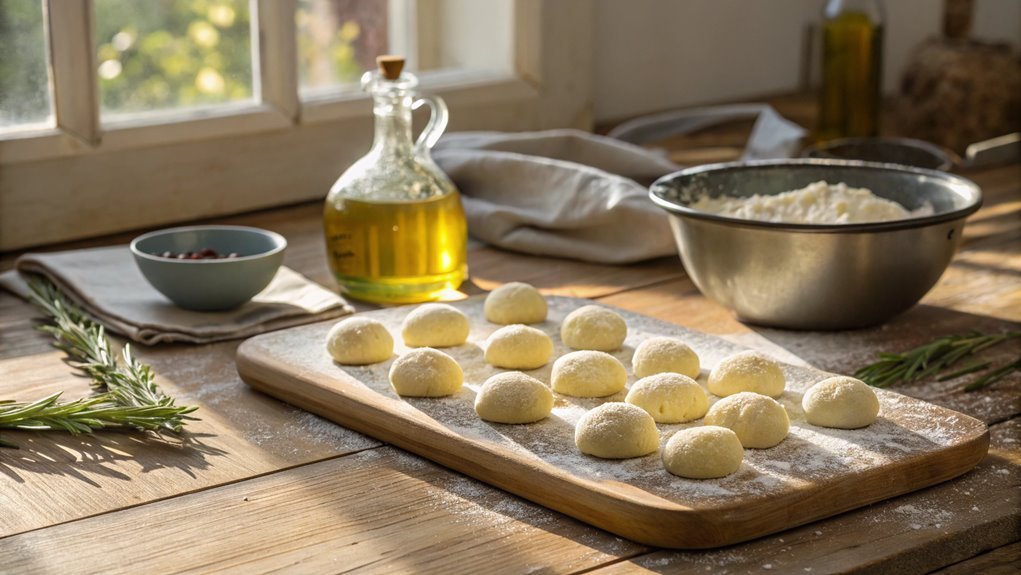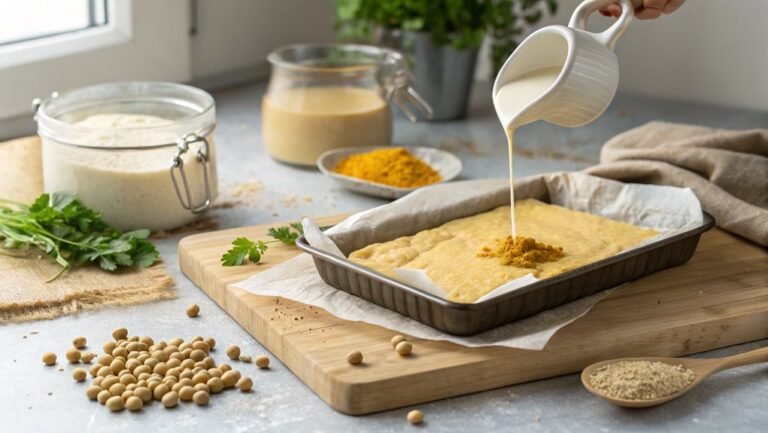How to Make Authentic Italian Pettole

Discover the joy of making authentic Italian pettole with just a few simple ingredients. These delightful, fluffy bites are perfect for any occasion and connect you to Italian culinary traditions. Ready to start? Let’s dive into the process and reveal the secrets of this tasty Italian masterpiece!
Recipe
Recipe
Embark on a delightful culinary adventure by making authentic Italian pettole, a treat that promises to tantalize your taste buds! Pettole, which are small irregular fried balls of yeast dough, are particularly popular in Ostuni and Apulia during the Christmas period.
Begin by awakening the yeast with warmth and watch as it springs to life. This is the foundation of your dough, which, when combined with the right ingredients, becomes a masterpiece of flavor and texture.
The process involves creating a smooth, elastic dough that’s full of potential, waiting to rise and transform. As it grows and bubbles, you’ll find yourself anticipating the deliciousness to come.
Ingredients:
- Active dry yeast
- Warm water
- All-purpose flour
- Sugar
- Salt
Instructions:
- Dissolve the active dry yeast in a bowl of warm water. Allow it to sit for a few minutes until it becomes frothy and activated.
- In a large mixing bowl, combine the all-purpose flour and sugar. Gradually pour in the yeast mixture, stirring continuously.
- Slowly add the remaining water while mixing, until the dough begins to form.
- Knead the dough by hand or with a dough hook attachment on a mixer until it’s smooth, elastic, and slightly sticky. This should take about 10 minutes.
- Sprinkle in the salt and continue kneading until the dough is completely lump-free.
- Place the dough in a greased bowl, cover it with a damp cloth, and let it rise in a warm spot. Allow it to rise until it triples in size and is filled with bubbles, indicating it’s ready for the next steps.
- Once risen, shape the dough into small balls or any desired shape and let them rest for a few minutes.
- Heat oil in a deep fryer or large pot to about 350°F (175°C). Carefully drop the dough balls into the hot oil, cooking them until they’re golden brown on all sides.
- Remove the cooked pettole with a slotted spoon and drain them on paper towels to remove excess oil.
Extra Tips:
For the best results, ensure your yeast is fresh and active.
The dough’s stickiness is crucial for the right texture, so resist adding too much flour.
Letting the dough rise in a warm environment will ensure maximum fluffiness.
If you prefer a savory version, consider adding herbs or cheese to the dough before frying.
Enjoy your pettole fresh and warm for the ultimate taste experience!
Frequently Asked Questions
What Region in Italy Is Pettole Originally From?
Pettole originally hail from Puglia, a region rich in culinary traditions.
This delightful treat has deep roots in Puglia’s history, traditionally enjoyed during special occasions like Christmas.
Puglia traditions celebrate the Feast of the Immaculate Conception, making pettole a festive staple.
By embracing this cherished recipe, you not only indulge in a delicious dish but also connect with the vibrant culture of southern Italy.
Don’t miss the chance to create and share this joyful experience!
Can Pettole Be Made Gluten-Free?
Absolutely, pettole can be made gluten-free! Picture delightful fluffy bites, reminiscent of little clouds, made with gluten-free flour instead of traditional wheat flour.
You can use blends like brown rice flour or millet flour as pettole alternatives. Just mix your ingredients, allowing the dough to rise beautifully, then fry them until golden brown.
You’ll discover these gluten-free pettole are just as tasty and perfect for experimenting with different fillings and toppings. Enjoy!
How Do I Store Leftover Pettole?
To store leftover pettole, keep them in a cool, dry place, preferably in an airtight container, to maintain that delightful crispiness.
If you’re planning to enjoy them later, placing them on kitchen towels helps absorb excess oil and prevents sogginess.
When you’re ready to indulge again, reheating pettole in the oven restores their crunch.
There’s nothing like savoring these tasty treats again, so don’t hesitate to enjoy them a second time!
What Variations of Pettole Exist?
When diving into the delightful world of pettole, you’ll find a treasure trove of variations waiting to be explored!
Think sweet pettole, lightly dusted with icing sugar or brushed with honey for a heavenly treat.
On the savory side, imagine dough filled with capers, olives, or even salted cod—each bite bursting with flavor!
Whichever kind you choose, you’ll be celebrating a delicious tradition that’s sure to impress family and friends alike!
Are Pettole Served as a Main Dish or a Side?
Pettole are often served more as a delicious side than a main dish, enhancing your culinary experience.
You can pair them with savory meals or enjoy them as a snack during festive occasions, like holidays.
There’s nothing quite like the crispy texture that complements any plate.
Experiment with flavors or enjoy them plain—your pettole choices are endless!
Conclusion
Making authentic Italian pettole fills your kitchen with warmth and fragrance, reminiscent of a cozy Italian Sunday morning. Frying those doughy bites to golden perfection is not just a treat but a celebration of flavors and tradition. Gather your ingredients and roll up your sleeves for this flavorful adventure. You’ll be creating delicious memories to share with family and friends!





